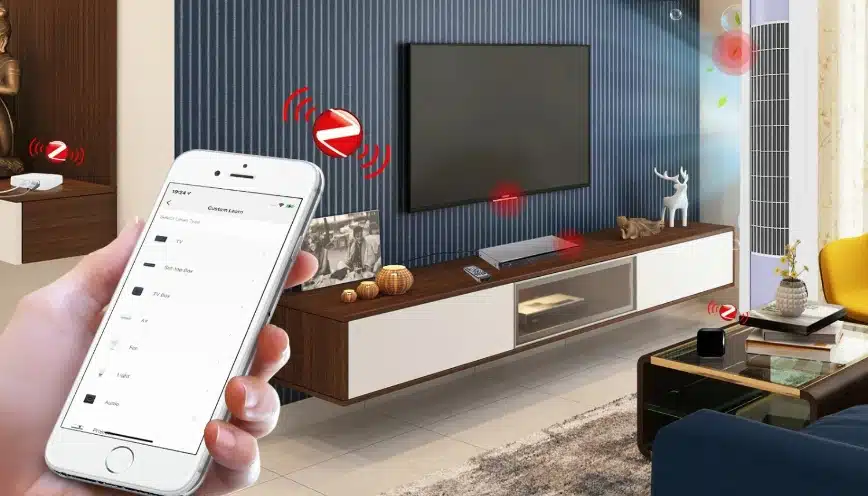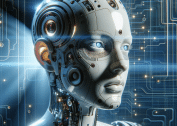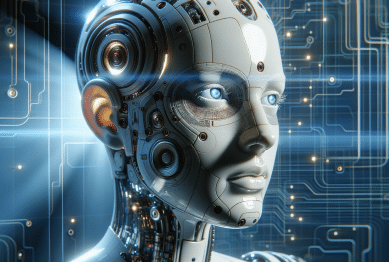Smart homes are no longer just futuristic concepts—they are becoming integral to modern living. With AI-powered devices, energy-efficient systems, and smarter security, home automation is reshaping daily routines. This article explores the latest trends in home automation, highlighting innovations that are defining smart living in 2025 and beyond. By understanding these trends, homeowners can make informed decisions to enhance convenience, safety, and efficiency.

AI-Powered Home Assistants: Beyond Voice Commands
Artificial intelligence is increasingly central to smart home ecosystems. Voice assistants like Amazon Alexa and Google Home continue to be popular, but the newest AI-driven devices go far beyond simple voice commands. Today’s smart assistants can anticipate household needs, automate routines, and optimize energy consumption based on daily patterns (Smith, 2025).
For example, AI algorithms can detect when family members are home and adjust lighting, climate, and appliance schedules automatically. This predictive behavior not only improves comfort but also reduces unnecessary energy use. AI-powered assistants can also provide reminders for maintenance tasks, monitor household air quality, and even offer health-related recommendations.
Key Features of Modern AI Assistants:
- Predictive Energy Management: Optimizes device usage to lower utility bills
- Smart Security Alerts: Detects unusual activity and sends real-time notifications
- Seamless Device Integration: Works across multiple brands and ecosystems
- Health and Lifestyle Assistance: Monitors air quality, sleep, and daily habits
The ability of AI to learn and adapt makes it a cornerstone of modern smart homes, turning passive devices into proactive household managers.
Energy Management and Sustainability
Sustainability has become a major driver of home automation trends. Connected energy monitoring devices, smart thermostats, and automated lighting are helping households reduce consumption and save on costs. A 2024 study found that homes using smart energy management systems can reduce electricity use by up to 25% annually (Jones, 2024).
Emerging Energy Trends in Smart Homes:
- Solar-Powered Smart Systems: Integration of solar panels with smart energy storage allows homes to harness renewable energy efficiently.
- Automated Energy Shifting: Smart devices can run appliances during off-peak hours, lowering electricity costs and easing grid demand.
- Eco-Friendly Smart Appliances: Refrigerators, washers, and HVAC systems now come with energy optimization modes that adjust performance according to usage patterns.
These energy solutions not only reduce costs but also contribute to environmental conservation, making sustainable living more accessible.
Case Study: The city of San Diego has reported that households implementing smart energy management and solar integration reduced their carbon footprint by 18% over two years, demonstrating the tangible impact of these technologies.
Security Innovations: Smarter Than Ever
Home security has evolved from simple alarm systems to sophisticated AI-driven solutions. Security is no longer just about responding to threats—it’s about preventing them. Modern smart security devices use AI to differentiate between everyday activity and genuine threats, reducing false alarms and increasing reliability.
Key Security Features in 2025:
- AI-Powered Threat Detection: Cameras and sensors analyze patterns to detect unusual behaviors.
- Remote Monitoring: Smartphone apps allow homeowners to monitor property in real time, even from thousands of miles away.
- Facial Recognition Locks: Grant access selectively based on user identification, enhancing both security and convenience.
- Neighborhood Integration: Connected networks allow homes to share alerts about local incidents.
A recent report indicates that urban households adopting AI-based security solutions increased their sense of safety by over 30% compared to traditional systems (Brown, 2025). Smart security systems are becoming essential, particularly in cities where safety concerns are higher.
Personalized Living with Smart Devices
Personalization is a growing priority in home automation. Today’s devices learn individual habits and preferences, adjusting the home environment to suit each family member. Smart lighting systems, for instance, can change color and brightness based on mood or time of day. Similarly, smart speakers can tailor playlists according to user preferences or the type of activity.
Personalized Smart Home Innovations:
- Smart Beds: Adjust firmness and temperature based on sleep quality metrics.
- Climate Control: Learning algorithms adapt temperature and humidity to individual comfort levels.
- Kitchen Assistance: Smart refrigerators suggest recipes based on available ingredients and past cooking habits.
- Entertainment Systems: Automatically adjust room lighting, sound, and display settings for optimal viewing experiences.
By delivering customized experiences, these technologies enhance both comfort and convenience, creating living spaces that respond intelligently to the needs of occupants.
Voice, Gesture, and Emotion Control Interfaces
Voice control has been the dominant interface for smart devices, but emerging technologies are introducing gesture recognition and emotion-sensing capabilities. These interfaces allow homeowners to interact naturally with their environments, often without needing to touch screens or mobile devices.
Benefits of Advanced Interfaces:
- Gesture-Based Control: Offers touch-free interaction, useful for hygiene and accessibility.
- Emotion Sensing: Cameras and sensors can detect mood and adjust lighting, music, or temperature to improve wellbeing.
- Intuitive Navigation: Makes smart homes more user-friendly, especially for elderly or differently-abled users.
These interfaces enhance user experience by creating environments that respond intuitively to human behavior, further integrating technology into daily life.
Smart Kitchens: Automation Meets Culinary Convenience
The kitchen has emerged as a hotspot for smart home innovation. Connected appliances and AI-driven assistants are transforming meal preparation and household management. Smart refrigerators track inventory, suggest recipes, and even place orders for groceries automatically. Meanwhile, smart ovens and cooking appliances can adjust cooking times and temperatures based on real-time feedback.
Top Smart Kitchen Trends:
- Automated Grocery Tracking: Sensors in refrigerators and pantries monitor supplies and help plan shopping.
- Energy-Efficient Cooking: Appliances optimize energy use without sacrificing cooking quality.
- AI-Driven Meal Planning: Suggests meals tailored to dietary requirements and ingredient availability.
- Connected Kitchen Ecosystems: Integration between appliances allows seamless workflow, improving efficiency.
Smart kitchens are helping homeowners save time, reduce food waste, and simplify meal preparation, making technology a key part of everyday routines.
Integration and Interoperability
One of the major challenges in home automation is device compatibility. Without interoperability, households often face fragmented systems that require multiple apps or platforms. The adoption of universal standards like Matter is making it easier to integrate devices across brands.
Benefits of Interoperable Smart Systems:
- Simplified User Experience: Single interfaces control multiple devices seamlessly.
- Easier Expansion: Add new devices without worrying about compatibility issues.
- Reduced Ecosystem Lock-In: Homeowners are no longer forced to stick with one brand.
As smart homes grow more complex, seamless integration will be crucial to maintaining efficiency and usability. Interoperability ensures that all devices communicate effectively, allowing homeowners to take full advantage of automation.
Future Directions and Predictions
Looking ahead, several emerging trends will likely define the next phase of smart living:
- Edge Computing for Homes: Processing data locally rather than in the cloud improves speed, reliability, and privacy.
- Biometric Access Control: Beyond facial recognition, systems may use fingerprint, iris, or voice biometrics for enhanced security.
- Home Health Monitoring: Integration of wearable and environmental sensors to track wellbeing and alert medical professionals in emergencies.
- AI-Driven Home Management Platforms: Centralized platforms capable of managing all aspects of a smart home with minimal human intervention.
These innovations suggest that the smart home of 2030 will be highly autonomous, energy-efficient, and personalized, blending seamlessly into daily life.
Conclusion
The trends in home automation and smart living for 2025 show a clear trajectory: smarter, more efficient, and increasingly personalized homes. AI-driven assistants, energy-efficient systems, advanced security, and interoperable devices are transforming the way people live, offering convenience, safety, and sustainability. Staying informed about these trends allows homeowners to make strategic investments, ensuring their homes are prepared for the future of smart living.
References
- Smith, J. (2025). AI in Smart Homes: Anticipating User Needs. Tech Innovations Journal. Available at: https://www.techinnovationsjournal.com (Accessed: 21 August 2025).
- Jones, L. (2024). Energy Efficiency Through Smart Home Systems. Energy Today. Available at: https://www.energytoday.com (Accessed: 21 August 2025).
- Brown, K. (2025). Urban Adoption of AI-Powered Security Systems. Security Insights. Available at: https://www.securityinsights.com (Accessed: 21 August 2025).









